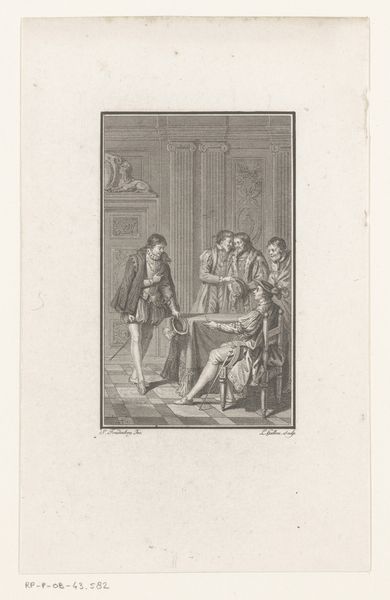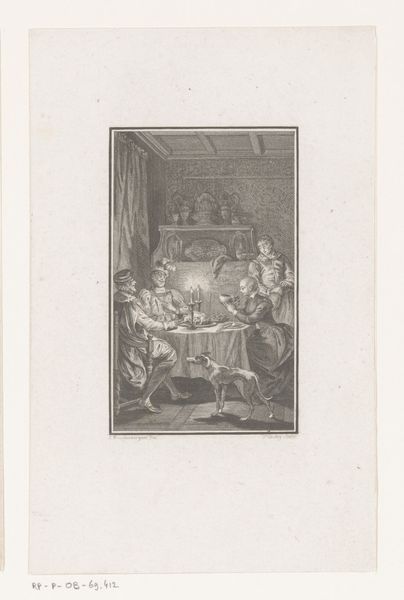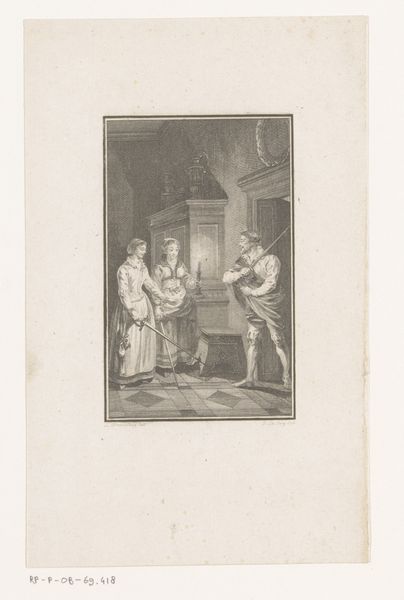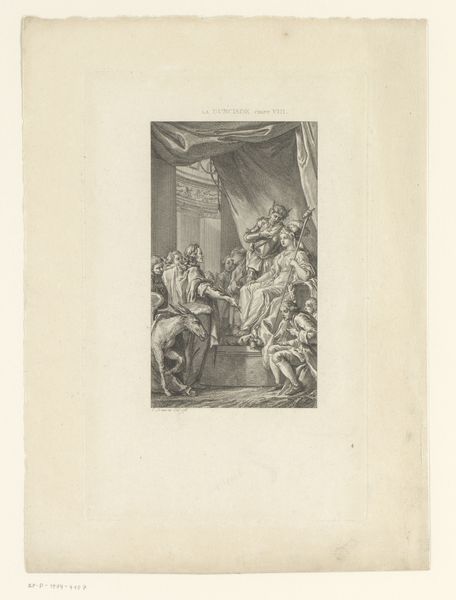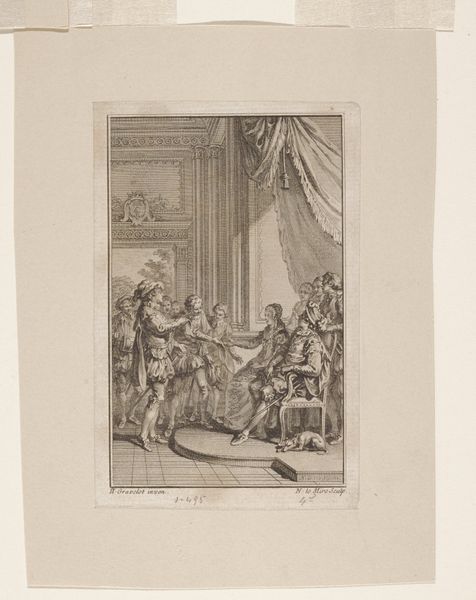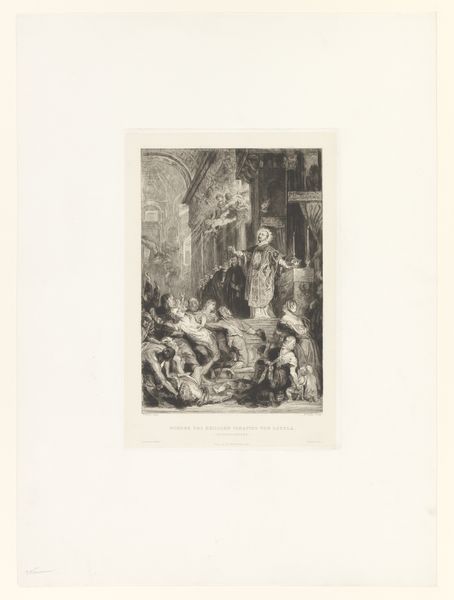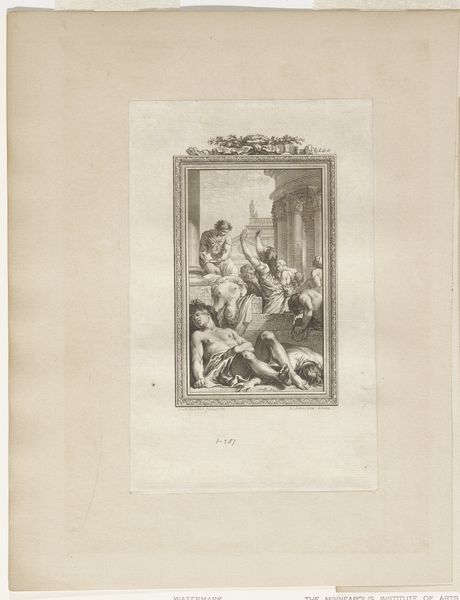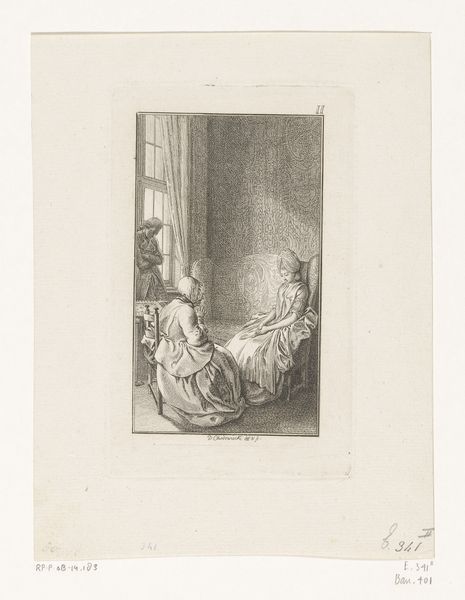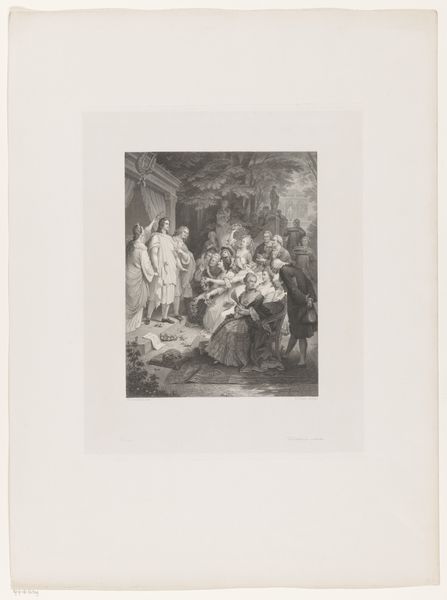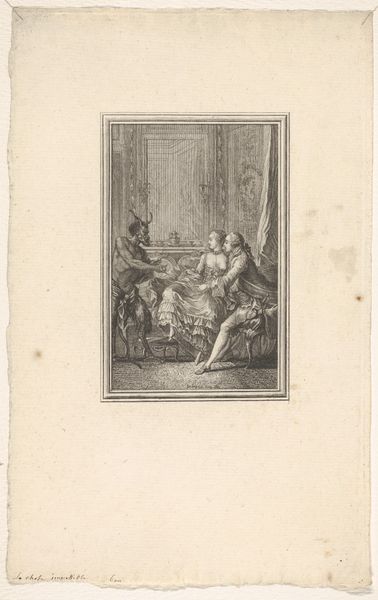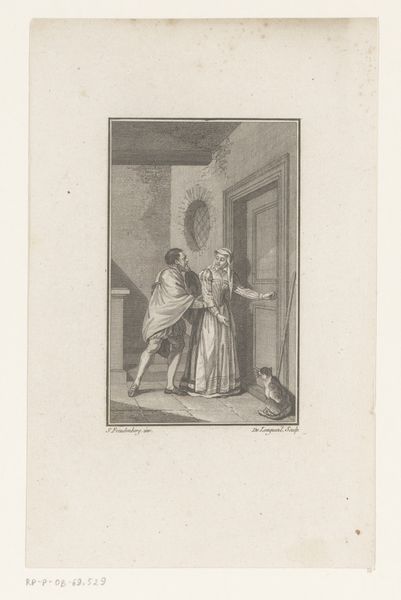
Dame weggevoerd door twee soldaten, terwijl andere dame op haar knieën gaat voor edelman c. 1749 - 1799
0:00
0:00
jacquesleroy
Rijksmuseum
Dimensions: height 186 mm, width 116 mm
Copyright: Rijks Museum: Open Domain
Editor: This engraving, "Dame weggevoerd door twee soldaten, terwijl andere dame op haar knieën gaat voor edelman," made by Jacques Le Roy, sometime between 1749 and 1799, depicts quite a dramatic scene. I’m struck by the stark power dynamics and the implied violence. How do you interpret this work within its historical context? Curator: The scene is charged with the very essence of inequity. What grabs my attention is how this image lays bare the vulnerabilities inherent within patriarchal structures and systems of power. Here, the subjugation of women is not merely a theatrical display but a symptom of deeper social, economic, and political oppressions. Consider the Baroque style; the drama serves not only aesthetic purposes but also as a vehicle to question the legitimacy of power and reveal its brutal underpinnings. Editor: That's a perspective I hadn't fully considered. The Baroque style highlighting deeper social issues. It appears there's an obvious difference between the subjects, with a distinct power disparity between the "edelman" and the ladies. Curator: Precisely. Who benefits from this hierarchy? We must consider this tableau, not in isolation, but as a critical lens through which to examine intersectional themes like class, gender, and even the silent complicity of those observing the scene. Editor: So, it’s more than just a historical scene, but a commentary on systemic injustice? Curator: Yes, the historical is always political. It makes one think, doesn’t it, about whose stories are deemed worthy of preservation, and the ethics of representation. Editor: I'm starting to see how art can really hold up a mirror to society's problems, even centuries later. Curator: Absolutely. Art serves as both a mirror and a magnifying glass, helping us critically engage with the complex narratives that shape our world. It is exciting to consider and to bring a contemporary voice to a work that's 300 years old.
Comments
No comments
Be the first to comment and join the conversation on the ultimate creative platform.
